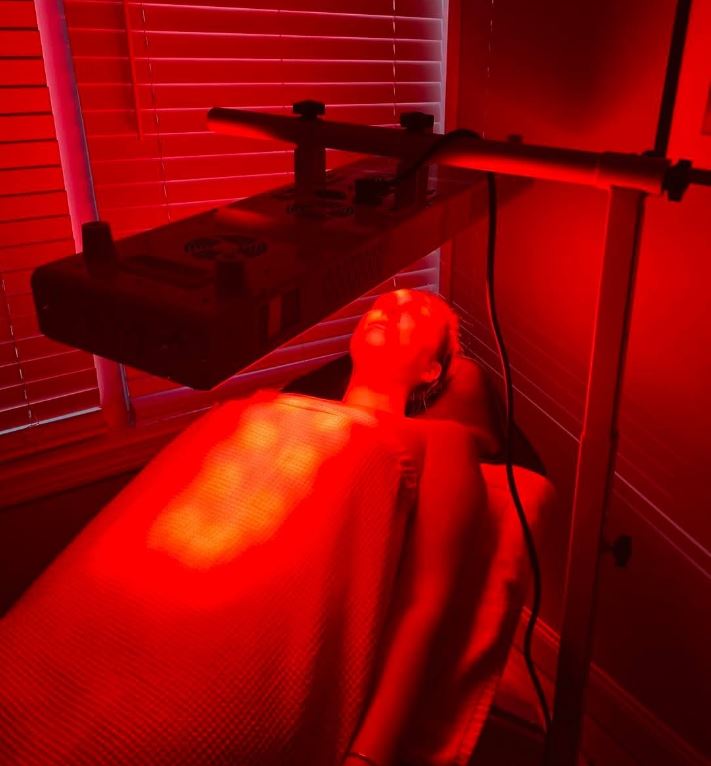![]() Free Shipping
Free Shipping ![]() Buy Now, Pay Later
Buy Now, Pay Later ![]() Eligible
Eligible
Is Red Light Therapy Effective for Lymphatic Drainage? Exploring the Science and Benefits

In recent years, red light therapy (RLT) has gained popularity as a non-invasive treatment for various health concerns—from skin rejuvenation to pain relief. But one of its lesser-discussed yet potentially transformative benefits is its effect on lymphatic drainage.
The lymphatic system plays a crucial role in detoxification, immune function, and fluid balance. When it becomes sluggish, toxins build up, leading to swelling (lymphedema), inflammation, and even weakened immunity. Traditional lymphatic drainage methods include massage, dry brushing, and exercise—but could red light therapy offer a more efficient solution?
Let’s dive into the science, benefits, and real-world effectiveness of RLT for lymphatic drainage.
Understanding the Lymphatic System and Why Drainage Matters
Before exploring red light therapy’s role, it’s essential to understand how the lymphatic system works. Unlike the circulatory system, which relies on the heart to pump blood, the lymphatic system depends on muscle movement and external stimulation to transport lymph fluid. This fluid carries waste products, bacteria, and dead cells away from tissues.
When lymphatic drainage is impaired, you may experience:
- Swelling (edema) in limbs or face
- Cellulite buildup due to trapped toxins
- Chronic inflammation and slow healing
- Fatigue and brain fog from toxin accumulation
Traditional methods like manual lymphatic drainage (MLD) massage can help, but they require time and expertise. This is where red light therapy steps in as a potential game-changer.
How Red Light Therapy Works for Lymphatic Drainage
Red light therapy uses low-wavelength red and near-infrared (NIR) light to penetrate the skin and stimulate cellular activity. Here’s how it may enhance lymphatic function:
1. Boosts Circulation and Lymph Flow
RLT has been shown to improve microcirculation, helping the lymphatic vessels move fluid more efficiently. A 2013 study published in Photomedicine and Laser Surgery found that red light therapy significantly increased blood flow, which is closely linked to lymphatic drainage.
2. Reduces Inflammation and Swelling
Inflammation is a major contributor to lymphatic congestion. Research in Lasers in Medical Science (2017) demonstrated that red light therapy reduces inflammatory markers, helping to relieve swelling and promote detoxification.
3. Enhances Cellular Detoxification
Red light stimulates mitochondrial function, increasing ATP (energy) production in cells. This energy boost helps cells remove waste more effectively, reducing the burden on the lymphatic system.
4. Supports Collagen and Tissue Repair
Damaged or fibrotic tissues can block lymphatic flow. RLT promotes collagen remodeling, ensuring that lymphatic vessels remain flexible and functional.
VELLGUS Elite V2
THE #1 RATED RED LIGHT DEVICE
VELLGUS pro V2
THE #1 RATED FULL BODY RED LIGHT DEVICE
Scientific Evidence: Does RLT Really Help with Lymphatic Drainage?
While research on RLT specifically for lymphatic drainage is still emerging, several studies suggest promising benefits:
- A 2021 study in Journal of Clinical Medicine found that near-infrared therapy improved lymphedema in breast cancer patients by reducing swelling and improving fluid drainage.
- Another 2019 study in Lymphatic Research and Biology reported that low-level laser therapy (a form of RLT) enhanced lymphatic vessel contraction, improving fluid movement.
- Anecdotal evidence from wellness clinics highlights that combining RLT with manual lymphatic massage yields faster and longer-lasting results than massage alone.
How to Use Red Light Therapy for Lymphatic Drainage
If you’re considering RLT for lymphatic support, here are some effective ways to incorporate it:
1. Targeted Treatment for Swollen Areas
- Use an RLT panel or handheld device on areas with swelling (e.g., legs, arms, neck) for 5–15 minutes daily.
- Focus on lymph node clusters (neck, armpits, groin) to stimulate drainage.
2. Combine with Lymphatic Massage or Dry Brushing
- Apply RLT before massage to prime the lymphatic system.
- Alternatively, use it after dry brushing to enhance detox effects.
3. Full-Body RLT for Systemic Benefits
- If using a full-body panel, stand 6–12 inches away for 10–20 minutes, 3–5 times per week.
Potential Limitations and Considerations
While RLT is generally safe, it’s important to note:
- It’s not a standalone cure for severe lymphedema—combine it with other therapies.
- Consistency is key—results may take weeks of regular use.
- Hydration enhances effects—drink plenty of water to support lymphatic flushing.
Final Verdict: Is Red Light Therapy Worth Trying?
Based on current research and user experiences, red light therapy appears to be a promising tool for improving lymphatic drainage—especially when combined with other detox methods. While more clinical studies are needed, its ability to reduce swelling, enhance circulation, and lower inflammation makes it a compelling option.
If you struggle with water retention, sluggish detoxification, or post-surgery swelling, RLT could be a valuable addition to your wellness routine. As always, consult a healthcare provider before starting any new therapy—especially if you have a diagnosed lymphatic condition.
Have You Tried RLT for Lymphatic Drainage? Share Your Experience!
Have you experimented with red light therapy for detox or swelling? Drop your thoughts in the comments—we’d love to hear your results!
References:
- Avci P, et al. (2013). Photomedicine and Laser Surgery.
- Ferraresi C, et al. (2017). Lasers in Medical Science.
- Omar MT, et al. (2021). Journal of Clinical Medicine.
- Moshiri R, et al. (2019). Lymphatic Research and Biology.








